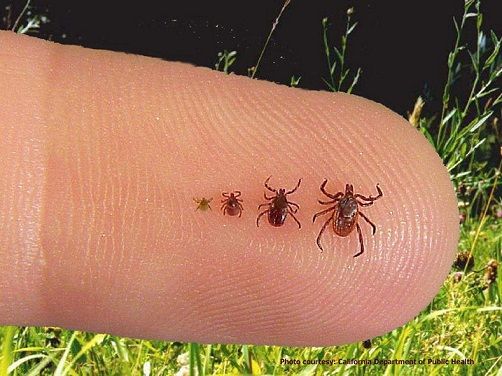Doctors concerned, cases of Lyme disease increase in Ontario
Digital Reporter
Saturday, July 25, 2015, 3:28 PM - Eastern Ontario has seen a surge in cases of Lyme disease over the past few years.
Lyme disease is a bacterial infection transmitted by ticks infected with borrelia bacteria. Woodland animals like white-footed mice, raccoons, skunks, foxes, or deer pick up the bacteria, and ticks contract it by biting infected animals.
An infected tick then passes it on to humans by burying its head into our skin.
![]() RELATED: Canadian singer opens up about life with Lyme disease.
RELATED: Canadian singer opens up about life with Lyme disease.
But not all ticks carry Lyme, and most people with tick bites don't necessarily contract the disease.
The illness is commonly spread through the bite of blacklegged ticks. And the longer the tick is attached to the body, the higher the risk for contracting the disease.
Now, doctors worry about how people are getting rid of ticks after being bitten.
Anne Marie Allart, a doctor with the University of Ottawa health services, tells the CBC she's seen many people who don't know what to do with ticks, post-bite. Allart says about 90 per cent of her patients have removed the bug incorrectly..
"I've seen it all. Lighting a match, pencils, fingernails, needles, everything they shouldn't be doing," Allart says, adding that she finds these reactions surprising, especially with the rapid increase of reported cases of Lyme disease.
"[I]f they leave body parts in, or if they squeeze, that can release the bacteria in the skin and make them sick.

So what's the right way to dispose of a tick? Allart tells the CBC that the key is a pair of tweezers.
"Grab the part of the tick that's closest to the surface of your skin and pull up gently without twisting. And make sure to wash your skin with soapy water immediately after.
According to veterinarians, pet owners know how to dispose of ticks better than others. Doctor Kevin McIntosh at Algonquin Animal Hospital says so far, his team has pulled two dozen ticks off pets this year, the CBC reports.
The animal hospital is currently handling 17 cases of animals with Lyme disease. McIntosh recommends that pet owners give their animals a "good rub down" from head to tail after walks in bushy areas.
"Behind the ears, around the face, anywhere where its east to bite is where the ticks will be signoff," McIntosh tells the CBC.
Here is a list of some common symptoms of Lyme disease, along with preventative measures to stay safe from infected ticks this season, courtesy of the Canadian Lyme Disease Foundation.
Symptoms
- Flu-like symptoms: headaches, fever, nausea, jaw pain, light sensitivity, muschle aches
- Large, bulls-eye type rash
- Diarrhea, upset stomach
- Bone or joint pains
- Shortness of breath
- Poor balance, dizziness
Prevention and Protection
- Wear light-coloured clothing to spot ticks.
- Avoid low-lying brush or long grass, walk on pathways and trails.
- Check clothing regularly for ticks -- they climb upwards towards exposed skin.
- Wear long-sleeved shirts and long pants when possible.
- Apply insect repellent to skin and clothing, covering all areas of open skin (e.g. ankles, wrists, neck.)
SOURCES: CBC | CanLyme | WebMD | Fairfax County, Flickr
Related: Tick population has spiked tremendously in Canada



